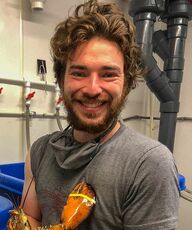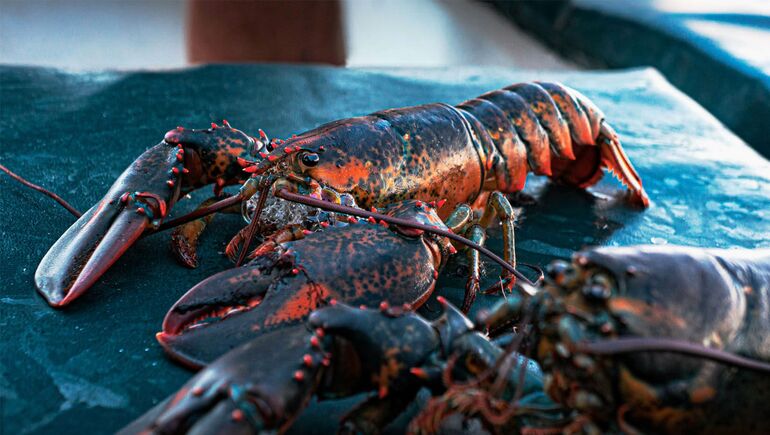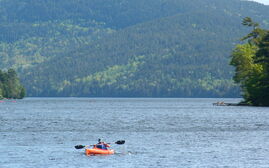
Maine researchers tackle why there are more adult lobsters, but fewer juveniles
 Courtesy / University of Maine
New studies are finding that juvenile lobster abundance is declining, possibly due to climate change
Courtesy / University of Maine
New studies are finding that juvenile lobster abundance is declining, possibly due to climate change
New information is emerging on how climate change is affecting American lobster populations and their connections to other species in the marine food web in the earliest stages of their life cycle.
“While the abundance of adult lobsters has increased dramatically in the last several decades, there has been a surprising decline in the abundance of their juvenile offspring in coastal nurseries,” said Alex Ascher, who spent the past five years studying American lobster as part of his Ph.D. program in marine biology through the University of Maine’s School of Marine Sciences.
The disconnect between high levels of egg production and low numbers of young lobsters in monitored coastal study areas has been widespread in the Gulf of Maine, he said.
Ascher conducted his research at the University of Maine’s Darling Marine Center in Walpole and at Bigelow Laboratory for Ocean Sciences in East Boothbay.
A few miles apart on the Damariscotta River estuary, the two marine laboratories have complementary facilities and research areas.
Along with Rick Wahle of UMaine’s Lobster Institute and David Fields of Bigelow Laboratory, Ascher and another UMaine graduate student, Evelyn Layland, are investigating factors influencing the survival of planktonic larvae before they settle to the seabed.
The project is designed to evaluate the hypothesis that the decline in lobster recruitment might be related to changes in food available to larval lobsters.
The questions behind the project center on implications for the future of lobster populations in a changing climate.

Others contributing to the project are Pete Countway from Bigelow Laboratory and Rachel Lasley-Rasher from the University of Southern Maine.
The work has been supported by Sea Grant, Maine’s Department of Marine Resources and the National Science Foundation-sponsored Maine-eDNA program, which is developing new ways to understand how DNA in the environment can inform an understanding and the management of natural and cultural resources.

Ascher’s analysis provides a first glimpse of the diet of larval lobster in the coastal Gulf of Maine. The DNA sequencing provides insights on the identity of planktonic prey that conventional microscopy cannot.
Layland’s studies focused on the feeding behaviors of larval lobsters and how those behaviors influence young lobsters. Her complementary research used video analysis to track the pursuit and handling of planktonic prey by larval lobsters in each of their four stages.
The studies underscore how vulnerable the earliest larval stages may be to starvation compared to the later stages that are better equipped to chase down and subdue their planktonic prey.
“When most people think of Maine lobster, they probably picture the lobster you would find in a restaurant or a tank at the grocery store, but lobsters' lives start several years earlier as tiny pea-sized larvae floating around in the water column,” Layland said.
This one is an easy answer: after 41 years of environmental engineering I can conclusively say that the issue is all the pharmaceutical residue excreted by humans that sewerage treatment plants were never designed to remove. The outfall from the treatment plant meets EPA & DEP requirements for discharge but they are not required to look for pharmaceutical residues which also accumulate even more in the sludge from the wastewater treatment facility. Low levels of Prozac, birth control hormones as well as 100's of other pharmaceuticals are in the outfall that these sea creatures swim in and absorb through their gills and digestive track. So there are lobsters on Prozac and birth control which in turn has an effect on the population. This is neither a stretch or brain surgery and my facts are derived from studies done by universities and environmental agencies.














1 Comments